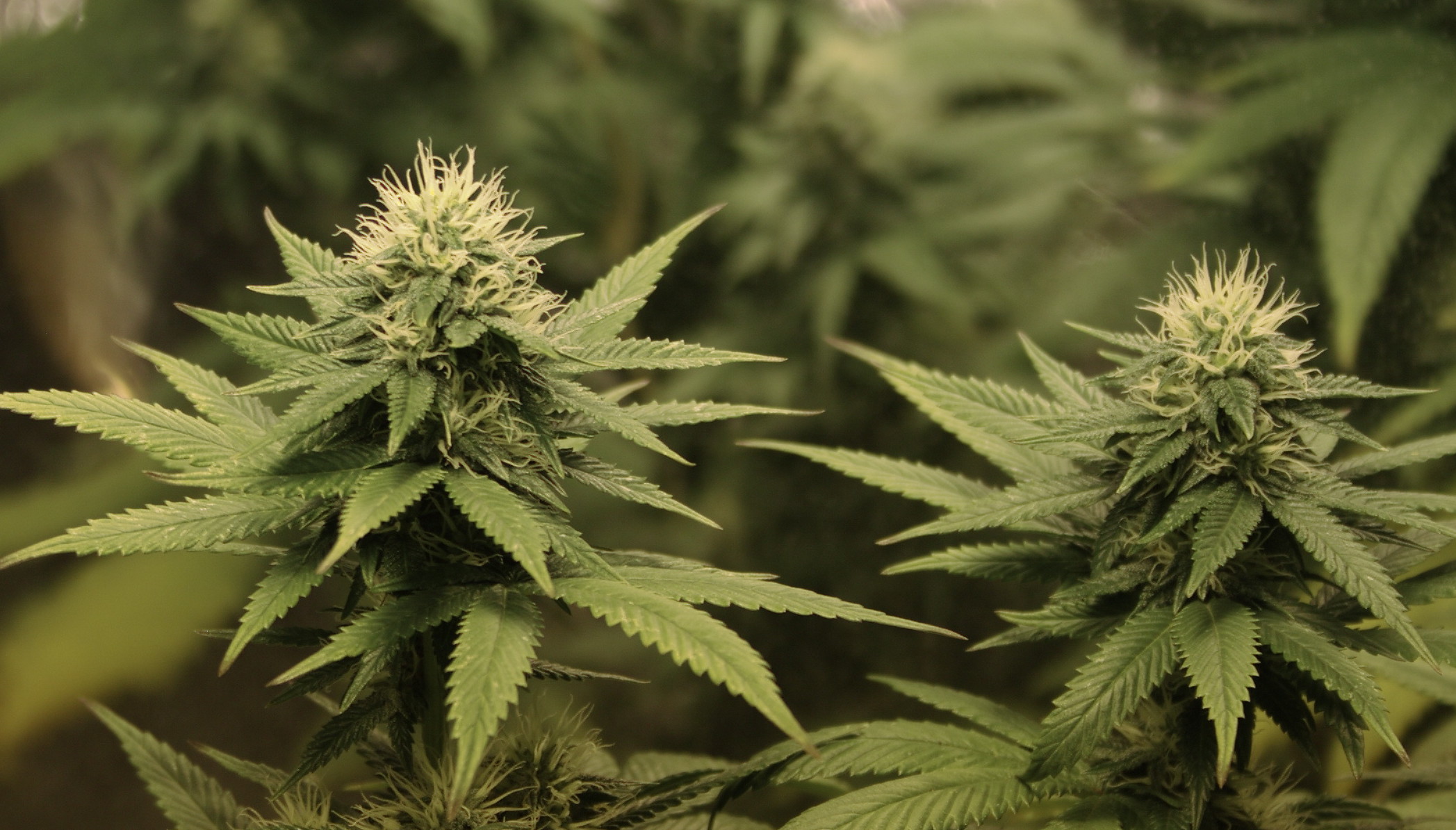
The Emerald Triangle has been looking more brown than green recently. With California en route to what may be the worst drought in 500 years, the Emerald Triangle — Mendocino, Humboldt and Trinity counties — is drying up alongside the rest of California. But the Emerald Triangle has a particular problem: it’s the seat of California’s biggest, quasi-legal cash crop — marijuana — and it’s using up millions of gallons of water while at the same time generating millions in revenue and contributing to the production of medical marijuana for half a million people. In Mendocino County, County Sheriff Tom Allman estimated that water thieves could be making off with as much as five million gallons of water a day. With some rural California counties in danger of running out of water in anywhere from 60 to 120 days, the illicit use of water in this way is something the environment simply cannot afford.
The liberalization of Americans’ views on marijuana — for the first time a majority of Americans, 58 percent, favor the legalization of marijuana — happens to have come at a time when climate change is increasing the frequency, severity and duration of droughts nationwide. The situation is especially dire on the West Coast where most marijuana is grown. As marijuana becomes medically and recreationally legal throughout the country, growing operations increase and so does their water use in drought-stricken states. But because marijuana use remains illegal under federal law, states like California cannot regulate or impose environmental restrictions on growers that would regulate water, fertilizer and pesticide use.
The federal government has an interest in letting the marijuana industry flourish, especially in the recovering economy. The Emerald Triangle produces California’s biggest cash crop, worth $14 billion in sales since 2009, and generating $200 million in state medical marijuana sales taxes. And if California legalizes marijuana for recreational use it is projected to bring in $1.3 billion in much needed revenue. In Colorado, the recent legalization of recreational marijuana by the state could add upwards of $100 million dollars to its coffers and reach $1 billion in sales. The cash injection to Colorado’s economy in the first few months of legalization has Congress people in cash-strapped states like Rhode Island submitting legalization bills. Yet it is important to note that despite the increased number of states legalizing medical or recreational marijuana, the drug remains illegal on the federal level both medically and recreationally.
But this increase in state-level legalization means an increase in production and an even more pressing need for regulation. As the nation steadily moves towards further legalizing marijuana, while at the same time grappling with the effects of climate change and historic droughts that affect all aspects of life — crippling the agricultural industry and leading to record breaking wildfires — it is imperative that the federal government allow states to regulate the marijuana industry and lift it from its quasi-legal status. While the federal government has chosen not to crack down on many medical and recreational marijuana-growing operations in states where the practice is legalized, it has, in the past, used states’ attempts to regulate the industry to gather information on growers and conduct federal crackdowns. Federal crackdowns using information collected for regulation purposes have led to a fear of regulation within states like California.
Allowing regulation would help states to continue reaping the millions of dollars they collect in tax revenue from the marijuana industry, much needed cash in this time of economic crisis and ensure that the thousands of Americans who now rely on medical marijuana have access to their medicine at affordable prices.
A July 2012 Humboldt Country report acknowledges that the “creation or regulation, local ordinances, and other oversight tools for the emerging industry are lagging well behind,” because of the quasi-legal status of the industry. As a result of lack of regulation, marijuana growers divert water from rivers and streams, or dig their own illegal wells. This water diversion has led to uncontrolled use of water, with one plant using as much as 900 gallons in a season, and resulted in stream beds running dry during the growing season, endangering animals like the coho and chinook salmon.
The complete lack of regulation has seen unscrupulous growers use pesticide fences to ward off or kill animals that damage the crops, store and use dangerous pesticides in unsafe ways and litter their unkempt properties with “grow trash” and raw sewage. This is not to say that there aren’t ethical growers who harvest water during the winter and respect the environment, but those who fail to do so are numerous enough to consume 20 to 30 percent of water in local streams during the growing season, which also happens to coincide with the dry season: April through October. Dale Gieringer, an economist for the marijuana legalization advocacy group California’s National Organization for the Reform of Marijuana Laws (CA NORML), blames the harmful lack of regulations directly on the federal government: “U.S. government is directly to blame for [ending] established efforts to regulate outdoor growth.” Gieringer emphasizes the regulation of outdoor growth because indoor growers in Southern California use high-tech indoor grow operations that use a lot of electricity but much less water.
In Mendocino County, where the majority of growing operations are outdoors and expanding, the sheriff attempted regulation to much success before the federal government shut down the operation. Mendocino’s sheriff, Tom Allman, originally attempted instituting regulations in 2010 on the basis that regulating the number of plants a grower could have would cut down on wasteful calls to the police department from concerned citizens who saw marijuana growing from “property line to property line” and save resources. The regulatory system granted licenses to individuals with medical marijuana licenses, allowing them to grow at most six plants — the state-regulated number. It also allowed cooperatives made up of at least five patients to grow 25 plants per patient, as long as the plots were secured with six-foot fences and locked gates. The application process incurred a fee of $1,050, and once an application was accepted the grower was allowed to buy 99 zip ties per cooperative (where one zip tie per plant was required, which cost $25). There would be an additional $600 fee per cooperative for monthly inspections to ensure the appropriate use of water and electricity. Allman estimated that the total cost of regulated plants for growers would be between $7,500 and $10,000 per coop member.
Despite the cost, the success of regulation in Mendocino Country proves that many growers are willing to pay for regulation and the assurance that they aren’t acting in a legal gray area. Only one year after it began, Allman’s program had sold $110,000 worth of zip ties — or 4,400 plants worth — enlisting nearly 100 growers and bringing in a total of over $600,000 in much needed funds to the county.
But then, right as the regulation program was taking off, the federal government intervened, subpoenaing Mendocino County for the records of registered growers and eventually winning in court. With that the regulation program shut down and the 100 or so regulated growers were forced underground, fearing that Drug Enforcement Agency (DEA) agents would come knocking on their doors. Adam Wolf, the attorney representing two groups opposing the subpoena explained that, “the message this sends to people across the state trying to comply in good faith with medical marijuana regulations is that they should operate below ground.” The federal crackdown shattered the increasing trust between the growing community and law enforcement in Mendocino.
The environment wasn’t the only loser after the federal crackdown: not only do the underground growers harm the environment, but they harm consumers as well. As Gwynn Guilfurd explains in her revelatory article for Quartz, the deregulation also harmed consumers who could no longer count on purchasing pesticide-free, regulated medical marijuana. Not to mention that the deregulation caused the loss of hundreds of thousands of dollars in revenue for the county — revenue that seemed to only be increasing.
The harm to consumers didn’t stop with the deregulation of pesticide use. As deregulation leads back to harmful cultivation practices that exacerbate the drought, marijuana patients will see the cost of their ‘medicine’ rise. Ed Rosenthal, well-known marijuana legalization advocate, has predicted a doubling in prices due to the drought. While some of those subject to higher prices will be “potheads” with dubiously acquired medical cards, others will be cancer patients, multiple sclerosis patients or those suffering from chronic pain who rely on medical marijuana to lead a more comfortable life free of pharmaceutical drugs.
While the regulation and taxation of marijuana might force some out of the industry and incur deadweight loss for cheap consumers and producers, the benefits of regulation (environmental protection and consumer protection) far outweigh this harm. This is especially true when considering that low-cost producers are probably growing at the expense of the environment and using toxic pesticides that could harm consumers.
The federal government has found itself at a crossroads: confronting a wave of states that have legalized medical marijuana and are now moving towards recreational legalization while at the same time climate change worsens droughts in the very states that are seeing the marijuana industry boom — California, Colorado and New Mexico. Marijuana has proven to be a veritable cash cow for states like Colorado and California, which have just barely begun to make it out of the recession — bringing in $14 billion in sales in California since 2009. With an increasing portion of the American population favoring legalization, it is hard to see the legalization trend regressing.
In order to ensure that growers don’t abuse their land and worsen precarious environmental conditions, make sure that those who rely on medical marijuana are receiving a reliable and affordable product and to continue putting money in strapped state coffers, the federal government should stop cracking down on regulation attempts and reassure states that they will not intervene in renewed state-level regulation efforts. Counties already have a highly functional model in what Sheriff Allman instituted in Mendocino. By allowing state regulation without interference, the federal government would ensure that the Emerald Triangle and other counties will start looking a little greener again.

Science can instantly end this costly debate to save the planet.
After 32 years the scientists are 95% certain that Human CO2 induced climate change is real and is happening could lead to unstoppable warming.
Let’s hope the scientists are 100% certain before it’s too late otherwise any chance at CO2 mitigation is impossible as deniers feed on an unsustainable consensus of “maybe” the end is near for billions of innocent children.